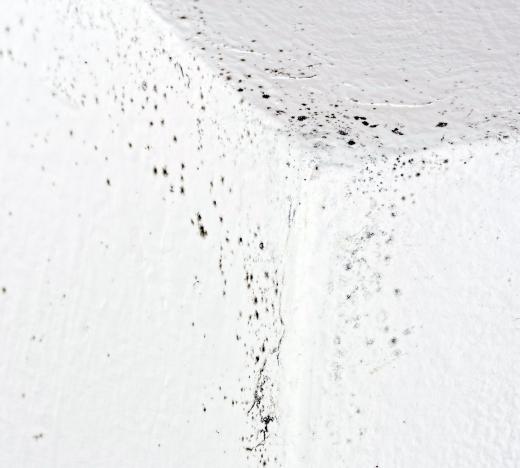A vapor retarder is a specialized material that restricts the movement of water vapor into or out of a structure. Vapor retarders are sometimes referred to as vapor barriers although there is no material that can be used to completely stop the flow of water vapors through it. A vapor retarder is primarily used to prevent excessive amounts of moisture from condensing inside of a building’s structural cavities when the air reaches the dew-point temperature. Condensation inside of these spaces can cause mold or mildew to occur and pose serious health risks to the building’s occupants. Vapor retarders are typically used to control moisture levels in walls, ceilings, floors, crawl spaces, and basements.
Vapor retarders first began to be used in building construction in the 1920s. At that time, researchers believed that water vapors could only move through structural cavities in a linear manner. In order to restrict the flow of moisture into and out of a structure, builders used the least permeable materials available to construct a vapor barrier. Further research in the 1950s indicated that air movement generally carried more moisture in and out of structures than water vapors. Based on this research, current building construction regulations require the use of an air barrier along with a vapor retarder for adequate moisture control.

In climates with lower year round humidity levels, a vapor retarder is usually applied to the exterior of a structure. In more humid climates, the interior walls of a building are the typical location of the vapor retarder. Most vapor retarders are installed as either a flexible sheet material or some type of liquid coating. Flexible materials such as laminated foil, metal foil, plastic film, and treated paper are generally used as a vapor retarder on the exterior of a building. Specialized primer and topcoat paints are frequently used as interior vapor retarders.
Vapor retarders can be installed during new construction or added to an existing structure at any time. A vapor retarder should never be applied to both the interior and exterior walls of a building, however. Controlled amounts of moisture must always be allowed to enter and exit the structure in order to prevent condensation from occurring in the wall cavities. Air barriers such as caulking and weather stripping used in combination with correctly placed vapor retarders are often the best defense against mold and mildew problems. Local building regulations are usually the best way to determine the type of vapor retarder needed and its interior or exterior placement.
